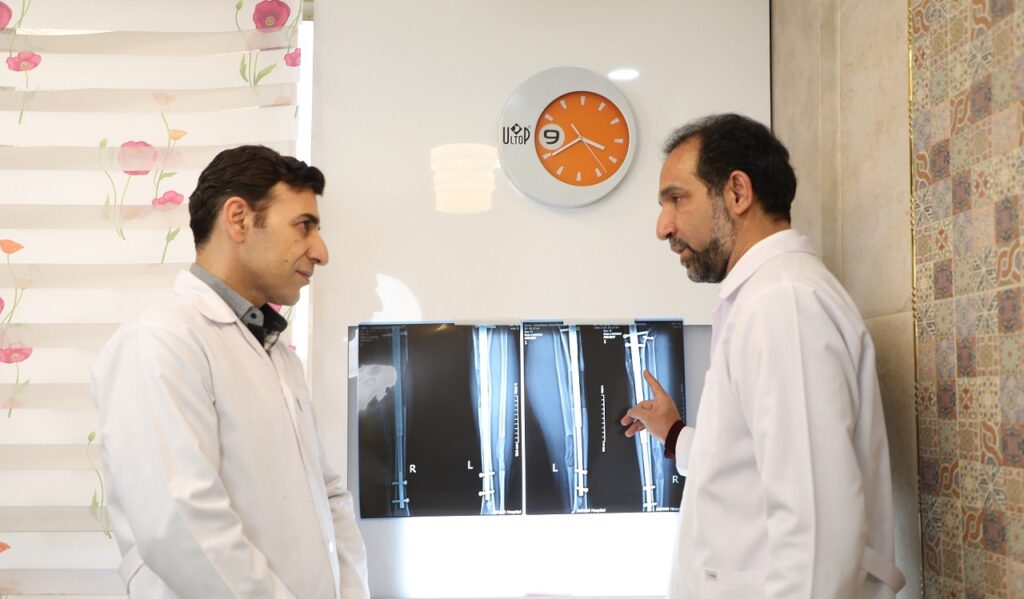What is Stem Cell Therapy?
Before we get into the specifics of stem cell therapy, let’s first discuss what stem cells are and how they can aid in treatment. Stem cells are distinct human cells that develop into functional cells. Because they give rise to “daughter cells,” stem cells are also known as “master cells.” These daughter cells can develop into new stem cells or specialized cells. Specialized cells include bone cells, heart muscle cells, body muscle cells, brain cells, and blood cells. Continue reading if you want to know how stem cell therapy can help limb-lengthening patients and how much stem cell therapy costs.

- What Is the Process of Stem Cell Therapy?
- Embryonic Stem Cells
- Stem Cells in Adults
- How Can Stem Cell Therapy Aid Limb-Lengthening Surgery?
- Is Stem Cell Therapy Required for Every Patient Having Limb-Lengthening Surgery?
- How Effective Is Stem Cell Therapy?
- What Are the Advantages of Stem Cell Therapy?
- What Is the Price of Stem Cell Therapy?
- FAQ
What Is the Process of Stem Cell Therapy?
Stem cell therapy (SCT) entails injecting cells directly into the body for therapeutic purposes. Stem cells are primarily obtained from the individual’s body, and they can differentiate into various mature cells that the individual’s body requires for healing and regeneration.
There are four types of stem cells: embryonic, fetal, adult, and diverse somatic cells that have been biologically altered to become induced pluripotent stem cells. Adult or embryonic tissues, on the other hand, are used for stem cell treatment. In a laboratory, researchers culture these cells and manipulate them to specialize in specific types of cells, such as nerve, blood, or muscle cells. The cells can then be implanted in a person, for example, if they have heart disease. In this case, a doctor can inject the cells into the heart muscle. The injection of stem cells is a simple outpatient procedure.
Embryonic Stem Cells
The stem cells are derived from embryos 3-5 days old. At this stage, a source is referred to as a blastocyst containing 150 cells. These cells are pluripotent, which means they can divide and become any cell in your body. Due to their adaptability, Embryonic cellscan repair or regenerate diseased organs and tissue.
Stem Cells in Adults
Adult tissues containing trace amounts of these stem cells include fat and bone marrow. Compared to embryonic cells, these cell shave a more limited ability to give rise to various body cells.
How Can Stem Cell Therapy Aid Limb-Lengthening Surgery?
Several factors, including the nature of your condition, your overall health, and many others, determine the efficacy of stem cell therapy for you. The most crucial step in deciding on this cutting-edge treatment is to consult your doctor.
Online consultations with the doctor can be scheduled if you want to learn more about stem cell therapy and how it might work for you. We’d be delighted to discuss your situation and stem cell therapy’s potential benefits.
Is Stem Cell Therapy Required for Every Patient Having Limb-Lengthening Surgery?
We recommend stem cell therapy to our patients who want to grow 5 cm or more. Dr. Nader Motallebizadeh recommends stem cell therapy for patients sedated during the lengthening surgery and device removal process. Our patients using the MTN method can be discharged within 1 hour or the same day after re-anesthesia.

The effect of Stem Cell Therapy on the healing time of patients undergoing limb-lengthening surgery is proportional to the amount of lengthening. In general, stem cell therapy can shorten the healing time of limb-lengthening patients by up to 2-3 months.
How Effective Is Stem Cell Therapy?
In the world, the success rate of stem cell therapy is typically 80 to 85 percent. On the other hand, you should be aware that the treatment benefited all our patients and shortened their recovery time.
What Are the Advantages of Stem Cell Therapy?
Stem cells contain natural growth factors that aid in the body’s healing process. It also aids in the relief of pain caused by disease or injury without the use of pain relievers, and the advantages of stem cell therapy are numerous.
In pain management and other medical procedures, using stem cells in regenerative medicine offers numerous advantages. Here are some of the benefits of stem cell therapy:
- Effectively alleviates pain
Using stem cells in pain management relieves pain while reducing inflammation caused by the pain. The goal is to repair and regenerate the affected area while effectively relieving pain.
- Quick Post-Procedural Recovery
In a typical surgical or medical procedure, the recovery period, rather than the treatment, consumes most of the time. When stem cells are used, recovery time is reduced. The goal is to get patients back to everyday life as soon as possible.
- Pursues Responsible Innovation
A stem cell treatment is a cutting-edge medical advancement that aids in the repair and rejuvenation of damaged tissues, nerves, cartilage, and muscles. While stem cell therapy provides immediate relief, it is also safe and effective.
- Improves functionality, range of motion, and flexibility
Patients are always eager to resume their regular routines. While stem cell treatments improve the functionality, range of motion, and flexibility of the injured joint, muscle, or body part, they also provide rapid recovery. One of the fantastic advantages of stem cell treatments is that they can help patients restore injured body parts to pre-injury conditions.
- Not Just for Pain Management, but for All Medical Conditions
In pain management procedures, stem cell therapies repair, replace, or rejuvenate degenerative joints and damaged tissue, ligaments, or nerves.
On the other hand, stem cell therapies have been used to treat various medical conditions, including cardiovascular disease, neurodegenerative disease, diabetes, and other autoimmune diseases.
- A Potential Injury Treatment
Some injuries can cause long-term tissue damage. Patients who sustain severe injuries in sports, at work, or in car accidents frequently suffer from excruciating pain and frustration. Damaged tissue can regrow gradually with stem cells, reducing frustration and providing pain relief.
- Prevents nerve damage
Some surgical procedures may cause nerve damage, impairing mobility and functionality. With stem cell treatments, there is a low risk of nerve damage. The stem cell is delivered directly to the affected area, avoiding nerve damage.
- There is no need for general anesthesia.
While the iliac crest is used to harvest bone marrow for stem cell generation, the treatment is non-surgical and minimally invasive. As a result, there is no need for general anesthesia.
- There is little to no risk of rejection.
Most stem cell therapies employ biological materials derived directly from the patient’s body. As a result, there is a lower likelihood of body rejection or complications.
What Is the Price of Stem Cell Therapy?
The cost of stem cell therapy for both legs ranges between $1,900 and $2,500.
FAQ
What is Stem Cell Therapy?
Stem cell therapy (SCT) entails injecting cells directly into the body for therapeutic purposes. Stem cells are primarily obtained from the individual’s body, and they can differentiate into various mature cells that the individual’s body requires for healing and regeneration.



